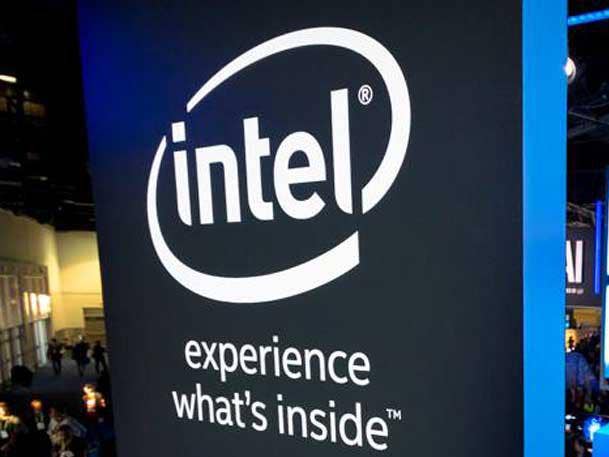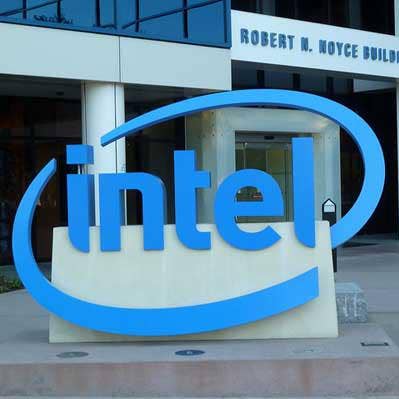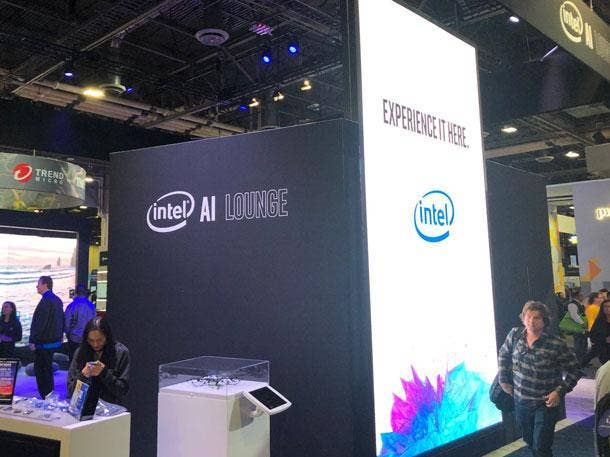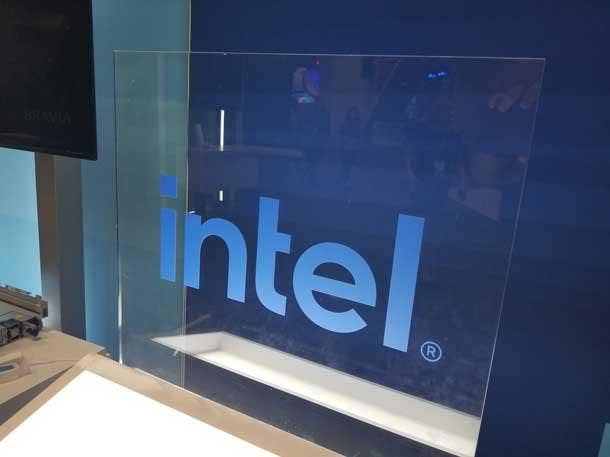Intel’s Earnings ‘Collapse’ And Its Comeback Plan: 7 Things To Know
The semiconductor giant’s latest earnings report has investors concerned that Intel has a steeper hill to climb to return to growth and higher profitability as part of CEO Pat Gelsinger’s comeback plan. CRN rounds up seven important things to know about Intel’s fourth-quarter 2022 earnings report and how it plans to recover.

Intel CEO Pat Gelsigner
Intel’s Hope Of A Comeback Now Faces A Steeper Climb
The big takeaway from Intel’s earnings report last week: things are going to get worse before they get better—a lot better if CEO Pat Gelsinger has his way.
The Santa Clara, Calif.-based semiconductor giant spelled out the various ways it’s experiencing a financial crunch—decreased revenues and lower margins, among other things—in the face of an economic downturn and increased competition during its earnings call last Thursday for the fourth quarter of 2022.
Two major themes surfaced throughout the call: one, that Intel’s numbers are going down, by double-digit percentages in several instances. And, two, declines are expected to continue in the first half of this year while Intel remains cautiously optimistic about revenues and profitability recovering in the second half.
[Related: 10 Hot Semiconductor Companies To Watch In 2023]
This is all playing out as Intel continues to push forward—in some cases ahead of schedule—with Gelsinger’s ambitious comeback plan, which aims to put the company ahead of rivals in advanced chip-making capabilities by 2025. At the same time, the company hopes to boost its product lines with its manufacturing gains while also building a competitive contract chip-making business to go against foundry rivals like TSMC.
“We made meaningful progress on several fronts in calendar year [2022], notwithstanding all the challenges, but we readily admit our results and our Q1 guidance are below what we expect of ourselves,” Gelsinger said on the call. “We are working diligently to address the challenges brought on by current demand trends and remain confident in our long-term plans and trajectory.”
Key financial measures like revenue and earnings per share were below Wall Street’s expectations for Intel’s fourth quarter. Other aspects like gross margin and cash flow were even below the expectations the company set out at Intel Investor Day last year.
The disappointing financial results prompted Intel this week to reduce salaries across a wide swath of its employee base, starting at the top with a 25 percent cut to Gelsinger’s pay.
“No words can portray or explain the historic collapse of Intel, with management attempting to blame a worst-ever PC inventory digestion dynamic and macro/China/enterprise to an over 20 percent q/q decline in sales,” Hans Mosesmann, an analyst at Wall Street firm Rosenblatt Securities, wrote in a note to clients last week.
The situation has investors concerned that Intel has a steeper hill to climb to return to growth and higher profitability. After the company’s fourth-quarter earnings report came out, its stock price plummeted by 10 percent before regaining a few percentage points in the last few trading days.
“Gross margins will be under pressure in our opinion regardless of the 5-nodes in four years and new Lake and Rapids CPU derivatives until 2025,” Mosesmann wrote.
Solution providers contacted by CRN said they see the headwinds Intel faces in the market but have faith that the company’s strategy will ultimately be successful.
“I think the investment in fabs is going to pay off quite nicely over the next decade,” said Randy Copeland, CEO of Velocity Micro, a Richmond, Va.-based PC system builder.
What follows are seven things to know about Intel’s earnings situation and how it plans to recover.

The Numbers: Intel’s Earnings For Q4 And Full-Year 2022
There wasn’t much good to be found in the main numbers for Intel’s fourth-quarter earnings, even when not using the more conservative lens of generally accepting accounting principles (GAAP).
From a non-GAAP view, Intel’s revenue for the quarter was $14 billion, a 28 percent year-over-year decline. Meanwhile, the company’s earnings per share stood at 10 cents, down 92 percent from the same period in 2021. Both figures were below Wall Street’s expectations.
Meanwhile, the company’s gross margin for the quarter was 43.8 percent, down 12.1 points from the same period in 2021. With GAAP, it was even worse at 39.2 percent, down 14.5 percent across the 12-month period. Those figures are below the 51 percent to 53 percent level Intel previously said it would maintain for gross margins in 2023 and 2024 before it expects the level to reach 54 percent to58 percent in 2025 and 2026.
Intel’s operating margin was 4.3 percent, down 23.9 points, with non-GAAP measures, and negative 8.1 percent, down 32.4 points with GAAP. Net income was $400 million, down 93 percent, with non-GAAP measures, and negative $700 million, down 114 percent, with GAAP.
These numbers left Intel with $63.1 billion in full-year revenue for 2022, a 16 percent decline using a non-GAAP filter and a 20 percent decline with GAAP. Those figures were well off the low single-digit growth the company previously said it would achieve at its investor meeting last year.
Gross margin for 2022 was 47.3 percent, down 10.8 points, with non-GAAP measures, and 42.6 percent, down 12.8 points, with GAAP. Once again, below Intel’s previous expectations of 51-53 percent.
Meanwhile, the operating margin was 12.6 percent, down 19.9 points, with non-GAAP measures, and 3.7 percent, down 24.6 percent, with GAAP. Net income was $7.6 billion, down 65 percent, with non-GAAP measures, and $8 billion, down 60 percent, with GAAP.
The company’s adjusted cash free flow for 2022 was negative $4 billion. This was at the lower end of its most recent guidance and well below the range of negative $1 billion to $2 billion Intel initially expected, as the company laid out at its investor meeting last year.

What’s Behind Intel’s Declining Revenue
The main culprits for Intel’s plummet in fourth-quarter revenue were significant downswings in demand for the company’s chips in PCs and servers.
“To various degrees, all our markets are being impacted by macro uncertainty, rising interest rates, geopolitical tensions in Europe, and COVID impacts in Asia, especially in China,” Gelsinger said in the company’s earnings call last week.
Intel’s PC business, the Client Computing Group, generated $6.6 billion, down 36 percent from the same period in 2021. This brought the group’s 2022 total to $31.7 billion, a 23 percent decline.
One of the main issues with the PC business, according to Gelsinger, is that lower demand has translated into plenty of Intel’s partners, including distributors and OEMs, holding excess inventory. This means a reduced need for these companies to buy more chips from Intel.
The company’s server business, the Datacenter and AI Group, includes other products such as field-programmable gate arrays, but Intel’s Xeon server chips make up most of the revenue. For the fourth quarter, the group brought in $4.3 billion, down 33 percent year-over-year. This brought the group’s total revenue last year to $19.2 billion, a 15 percent decline.
Intel blamed this decline on a contracting data center market and increased competition, with the latter resulting in similar inventory issues with partners and customers. Sales to hyperscale customers—the world’s largest data center operators—increased in 2022 while sales to enterprises and Chinese customers were down, according to Gelsinger.
Not all of Intel’s businesses saw declining revenue. However, their collective growth wasn’t enough to offset the big losses from the company’s PC and server businesses.
Intel’s Network and Edge Group brought in $2.1 billion in fourth-quarter revenue, a 1 percent year-over-year decline. This contributed to $8.9 billion in total sales for the group in 2022, an 11 percent year-over-year increase.
The company’s smaller businesses all grew in the fourth quarter and for 2022. Mobileye, a subsidiary that spun out into a public company last year, grew 59 percent year-over-year to $565 million in the fourth quarter. The Accelerated Computing Systems and Graphics Group, which includes Intel’s new discrete graphics products, increased 1 percent year-over-year to $247 million in the quarter.
Revenue grew 30 percent year-over-year to $319 million in the fourth quarter for Intel Foundry Services, the company’s revitalized contract chip manufacturing business. That brought the division’s total 2022 sales to $895 million, a tiny fraction of the revenues generated by Asian foundry giants TSMC and Samsung, which Intel hopes to take on with the business unit.

Intel Thinks Things Will Get Worse Before They Get Better In 2023
While Intel’s fourth-quarter earnings were worse than expected, the chipmaker believes financial conditions will deteriorate even further in the first half of the year before things potentially get better in the second half, though executives remain uncertain.
The semiconductor giant projected that first-quarter revenue will be roughly $10.5 billion to $11.5 billion. That would amount to a nearly 43 percent decline from the same period last year on the low end and a 37.5 percent year-over-year decline on the high end.
The company also expects gross margin to degrade further in the first quarter, droping down to 39 percent with non-GAAP measures and 34.1 percent on a GAAP basis. This leads the company further off the mark from its expectation last year that it would maintain a gross margin of 51 percent to 53 percent this year and next, which was already lower than what many investors would have liked.
Intel estimates its earnings per share will take a greater plunge in the first quarter too, expecting a loss of 15 cents per share with non-GAAP measures and a loss of 80 cents per share with GAAP. That would mark a 117 percent decline in earnings per share from the same period last share with non-GAAP measures and a 140 percent decline with GAAP.
David Zinsner, Intel’s CFO, also indicated there is some uncertainty as to whether the company will become cash-flow neutral this year after going into negative territory in 2022. He said Intel will likely have a negative cash flow in the first half of the year and expects the company’s cash flow to “approach” the breakeven point in the second half.
Though Intel expects earnings to improve in the latter six months of 2023, the company is so uncertain about how things could play out that it declined to issue guidance for the full year. This is a divergence from Intel’s tradition of issuing full-year guidance in the first-quarter earnings.
“We expect macro weakness to persist at least through the first half of the year, with the possibility of second-half improvements. However, given the uncertainty in the current environment, we are not going to provide revenue guidance beyond Q1,” Gelsinger said on the earnings call.

Why Intel’s Margins Are Lower Than Expected
For a long time, Intel was able to maintain a gross margin of around 60 percent before it began to plummet well below that level in 2020, which has become a major source of concern for investors.
Shareholders were already displeased last year when Intel projected that its gross margin would dip to 51 percent to 53 percent in 2023 and 2024—due to increased investments in advanced manufacturing nodes—before expecting it go back up to 54 percent to 58 percent in 2025 and 2026. Now with Intel’s gross margin going below 50 percent last year and potentially going under 40 percent in the first half of 2023, investors are more concerned than ever about Intel’s path back to higher profitability.
The biggest factor impacting Intel’s gross margin right now is the company’s lower revenue.
“So, obviously, revenue is the most significant impact to gross margin. We obviously did not expect to be down at these levels,” David Zinsner, Intel’s CFO, said on the earnings call.
Another factor impacting gross margin is the load of Intel’s chip manufacturing plants. Because demand is lower now, the company’s fabs aren’t running at capacity, which means they are less profitable due to the fixed costs of operating the factories.
“But again, as business conditions adjust, we will start loading the fab at a higher rate, and that will improve gross margins,” Zinsner said of Intel’s hope for things to improve later this year.
What’s also hurting Intel’s margins are the higher costs associated with the company’s advanced manufacturing nodes such as Intel 7 and next-generation products.
For the Client Computing Group, Intel cited an increased mix of products made with the Intel 7 node, such as Alder Lake and Raptor Lake, as one reason for the division’s operating income plummeting by 82 percent year-over-year to $700 million in the fourth quarter of 2022. The company also said investments in future products and manufacturing nodes dragged down operating income.
Similar factors led to an 84 percent year-over-year drop in operating income to $400 million in the fourth quarter for Intel’s Datacenter and AI Group. These factors included investments in future products and processes, higher unit costs and the costs ramping up production for new chips.
An increased investment in future products and processes was a significant factor too for the Network and Edge Group, whose operating income dropped 84 percent year-over-year to $58 million.

How Intel Expects To Recover
The biggest way Intel hopes to make a financial recovery is by executing on Gelsinger’s ambitious comeback plan. The plan, unveiled a few months after Gelsinger became CEO nearly two years ago, calls for Intel to introduce five new advanced manufacturing nodes between 2021 and 2025.
On Intel’s earnings call last week, Gelsinger said the company remains on track with its aggressive cadence of introducing new manufacturing nodes.
“We are at or ahead of our goal of five nodes in four years,” he said.
This began last year with Intel 7. The node, which was formerly known as Intel’s 10-nanometer Enhanced SuperFin process, is being used for the company’s Alder Lake and Raptor Lake chips on the client side and for Sapphire Rapids on the server side.
The next process, Intel 4, formerly known as its 7-nanometer node, is ready for manufacturing, according to Gelsinger. The node will be used for a next-generation client processor, code-named Meteor Lake, which will begin production in the second half of this year.
Meanwhile, Intel 3 is on track for this year, Intel 20A for early 2024, and Intel 18A for late 2024, the latter of which is ahead of the 2025 timeline the company originally gave.
As the company introduces new chip designs on these nodes, Intel hopes to become more competitive against AMD and other rivals, which, in turn, will ideally boost the chipmaker’s revenue.
The progression of Intel’s process road map will aid the company with another major goal in Gelsinger’s comeback plan: making a competitive contract chip manufacturing business. Called Intel Foundry Services, Gelsinger hopes the company will eventually make a big business out of manufacturing chips designed by other companies, not just the chips Intel designs in house.
While Intel Foundry Services revenue was under $1 billion in 2022, Gelsinger said the company has been seeing increased interest from potential customers.
Most recently, the company added a “leading cloud, edge and data center solutions provider as a leading-edge customer for Intel 3,” according to Gelsinger, on top of the company’s previously announced engagement with Taiwanese mobile chip designer MediaTek.
Intel also has “active pipeline engagements with seven out of the 10 largest foundry customers,” Gelsinger said. These foundry customers are companies that rely on contract manufacturers such as TSMC and Samsung to fabricate their chip designs in high volumes.
As a result, Intel Foundry Services now has 43 potential customers lined up and more than $4 billion in “lifetime deal value,” when including the MediaTek and cloud provider deals.

Intel’s Recovery Also Includes Cutting Lots of Costs
The other way Intel hopes to recover from its current financial low point is by significantly cutting costs.
Back in October, the chipmaker announced a massive spending reduction plan that calls for $3 billion in cuts this year and up to $10 billion in cuts both for 2024 and 2025. This would amount to a total of up to $23 billion in reduced spending over the next three years.
On last week’s earnings call, Gelsinger seemed to indicate that the company is moving forward with cuts faster than originally planned. He made sure to point out that the semiconductor giant will not slash investments that are important to his comeback plan.
“We are even more aggressively executing on the cost measures we described in Q3, even as we keep the investments critical to our long-term transformation intact, with a clear eye [toward] making the right capital allocation decisions to drive the most long-term value,” he said.
Intel is cutting costs by reducing its headcount, cancelling products and other projects, and putting in “more stringent cost controls in all aspects of our spending,” among other things.
This campaign has already resulted in some employees getting laid off, as indicated by recent public notices, or accepting voluntary retirement packages, as indicated by staff posts on LinkedIn.
On Tuesday, Intel announced internally that it would cut the base pay of executives and senior employees, including Gelsinger and other executive leadership members.
The cuts have already impacted Intel’s product portfolio too. On last week’s earnings call, Gelsinger said the company will no longer invest in its Tofino network switch chip business, which originated from Intel’s 2019 acquisition of Barefoot Networks.
“[The Network and Edge Group] continues to do well and is a core part of our strategic transformation, but we will end future investments on our network switching product line while still fully supporting existing products and customers,” Gelsinger said.
Intel has made cuts elsewhere, cancelling a $200 million development center in Israel, a $700 million data center cooling lab in Oregon and its Pathfinder RISC-V development program.
Separate from the cost-cutting program, Intel said last week that it plans to save billions of dollars by extending the life of certain production equipment in its fabs from five years to eight years. The company expects this to reduce its total depreciation expenses this year by roughly $4.2 billion.

How Solution Providers Feel About Intel’s Turnaround Prospects
Solution provider executives acknowledged that Intel has some tough challenges ahead but said the chipmaker still has what it takes to make a correction and return to a leadership position.
“I think they’ll get there. It’s going to take some time. It’s going to hurt a bit,” said Alexey Stolyar, CTO of International Computing Concepts, a Northbrook, Ill.-based system integrator.
One challenge Intel will continue to face is the data center market, according to Stolyar. He said there is still uncertainty about whether Intel can deliver products on a timely basis, citing multiple delays of its fourth-generation Xeon Scalable CPUs, code-named Sapphire Rapids, before they launched last month.
“They were late on releasing Sapphire Rapids [and other products] for the last few years, so there’s not a lot of confidence in them in terms of the release structure,” he said.
Stolyar said Intel will also have to contend with an increasingly competitive AMD, whose latest EPYC server processors are giving the rival a greater edge in workloads like high-performance computing.
“Where they hurt the most, I think, is in high-performance computing and true compute environments. AMD is just dominating there,” he said.
One thing that is helping Intel through this rough patch, according to Stolyar, is the company’s strong software support and independent software developer ecosystem.
“I do think they have better integration with software and things like that. If there are a lot more ISVs that are involved, they do have a better ecosystem. And so that’s going to keep them alive,” he said.
Nvidia’s decision to use Sapphire Rapids for its new DGX H100 system will also steer more interest for Intel’s latest server chips, according to Stolyar. He said a lot of customers have been making requests for DGX systems or systems with similar specifications. More often than not, that means Intel instead of AMD due to Nvidia’s processor shift for the GPU designer’s new flagship AI system.
“There are some customers who would say, ‘hey, give us both options and we want to explore it.’ But most customers are following the DGX platform, which is Sapphire Rapids,” he said.
Dominic Daninger, vice president of engineering at Nor-Tech, a Burnsville, Minn.-based system integrator, believes the increased competition from AMD will keep pushing Intel to do better, but he said the number of challenges facing the x86 giant now are unprecedented.
“I’ve seen pretty dark clouds over them before, and they’ve been able to work their way out of it. This one might be slightly worse than I’ve seen before. I saw the sleeping giant wake up there when AMD was the first one to get to a gigahertz, for example,” he said.
One thing that’s hurting Intel, according to Daninger, is that it’s been behind Asian foundry rivals TSMC and Samsung in advanced manufacturing technology, which is giving competitors like AMD access to nodes that are more powerful and efficient than what Intel can currently produce.
“AMD is going to give them a really good run for their money, and there’s no question. We’re seeing market gain of AMD in the server arena, both within our company and what I’m seeing reported in general. And you look at the benchmarks, it’s not a surprise. When you’ve got somebody with that much lead on the fab technology there, that’s not at all surprising to see what we’re seeing,” he said.
But that situation will eventually change as Intel makes progress with Gelsinger’s comeback plan, gets ahead with new manufacturing nodes and builds more fabs, according to Randy Copeland, CEO of Velocity Micro, a Richmond, Va.-based PC system builder.
“I think the investment in fabs is going to pay off quite nicely over the next decade,” he said.